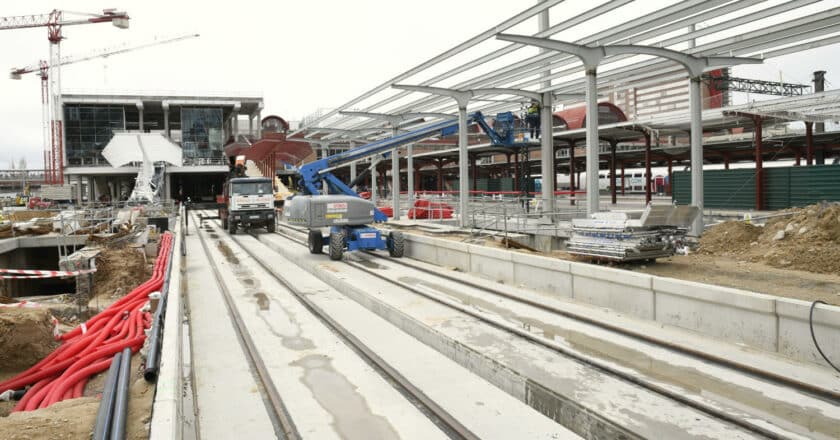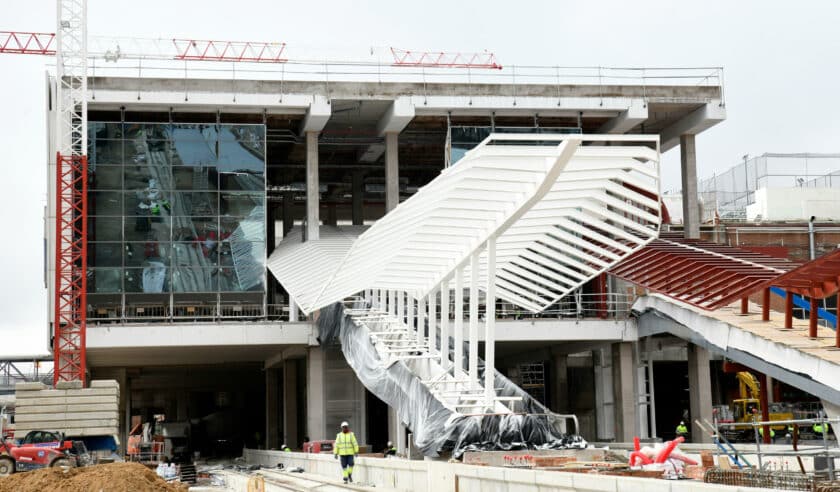The doubling of high-speed tracks at Madrid-Chamartín Clara Campoamor station, which will increase them from six to twelve, is approaching its last phase. From April 8th onwards, Adif Alta Velocidad will start the last works, extending the station to 25 tracks.
The works will last until July, but it is not known when the new facilities will be ready to enter service. The latter will depend on the AESF’s (Spanish Railway Safety Agency) issuance of the Authorisation for Commissioning, which usually takes a few months from the moment all the documentation is sent.
Three work fronts
The works will be carried out without interrupting the railway service, although it will be affected by them. This simultaneity of the execution with the commercial use of the station will entail great technical complexity, as it happens in the rest of the work being carried out in the station.
This phase will have three main work fronts:
1. Connection of tracks 22 to 25
The main milestone will be completing and commissioning tracks 22 to 25. These works include installing the tracks, switches, and crossings, electrifying them, and deploying the control, command, and signalling systems.
Before the Chamartín extension began, the station had six high-speed train tracks, from 16 to 21. Thanks to the conversion of tracks 14 and 15 to international gauge, it now has eight tracks. Together with the four tracks to be completed in this last phase, the station will have twelve tracks for these trains.
However, this is not the last extension. As part of the Madrid Nuevo Norte project, the station will be extended to track 31, adding six more for international gauge trains. Chamartín will have 13 Iberian gauge tracks and 18 international gauge tracks when these works are completed.
2. Enlargement of the vestibule
The new tracks will be commissioned, and the first extension of the vestibule for high-speed trains will be put into operation.
Currently, the entire Chamartín passenger building is being extended to the north, above the platforms, and to the east, above the new tracks. Work will be carried out in this phase between tracks 20 and 25, which will have their definitive vestibule when this phase is completed.
Access to the platforms will be via the so-called fingers, mechanical ramps covered by a shelter that connects the building with the platforms. Tracks 20 and 21 must be left out of service to carry out these tasks.
After this enlargement, the surface area of the passenger building for high-speed train users will increase from the current 2,5002 to 3,7002. However, later on, Adif will have to work on the enlargement to the north of the vestibule area used for tracks 14 to 19.
3. New subway
Finally, a new underground passageway will be completed to connect tracks 14 to 25 in this phase. To optimise the flow of people, it will only serve as an exit.
Lifts and escalators will link it to the platforms, and on the east side, it will have a direct exit to Hiedra Street, the temporary taxi stands, and the bus stops.
On the west side, it will initially be connected to the “Red T,” the historic underground corridor that links all the Chamartín tracks with the metro station. This will, therefore, facilitate transfers to commuter trains, other conventional gauge trains, and the metropolitan railway.
When the Cercanías underground vestibule extension to track 13 is completed, this new corridor will be directly connected.
Cutting of tracks and reduction of services
Adif assures that six of the eight high-speed tracks currently in service will be used during the execution of these works.
However, to complete all the work, total and partial track cuts will be made. These interruptions will mainly affect tracks 20 and 21. We will detail these actions in issue 4 of our magazine.
Given Chamartín’s very limited capacity for the current traffic, 32 daily trains will have to be cut. Adif is studying with the train operators how to minimise the impact on passengers with solutions such as using double trains.



